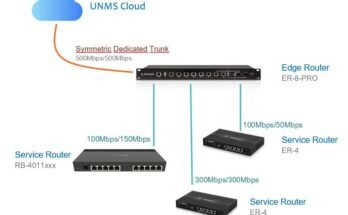Unlocking the Future: A Deep Dive into Communications Colleges
In a world where instant connectivity shapes our daily lives, communications colleges stand at the forefront of innovation. These specialized institutions blend cutting-edge technology with academic rigor, preparing students to master the systems that power our interconnected planet. Let’s explore what makes these colleges a gateway to tomorrow’s tech-driven careers.
What Are Communications Colleges?
Specializations and Fields
Communications colleges offer dynamic programs spanning telecommunications engineering, communication networks, signal processing, electronics, and ICT (Information and Communication Technology). Many programs also merge computer science with engineering, creating hybrid disciplines tailored to evolving industry needs. Imagine designing 5G networks, optimizing IoT devices, or securing cloud infrastructure—these are the challenges students tackle head-on.
Academic Focus
The curriculum balances theory and practice. Courses in mathematics, physics, and electrical engineering lay the groundwork, while hands-on labs, research projects, and internships bring concepts to life. Picture students testing wireless systems in advanced labs or coding algorithms to enhance data transmission—this is where classroom knowledge meets real-world application.
Why Pursue a Degree Here?
Technical Mastery
Students gain expertise in designing, maintaining, and upgrading communication systems—skills critical in an era of rapid technological advancement. Whether it’s developing satellite networks or securing cyber-physical systems, graduates emerge ready to shape the future.
Practical Experience
From prototyping smart devices to simulating network security breaches, students apply theories to tangible projects. This practical edge ensures they’re not just job-ready but innovation-ready.
Research and Innovation
Collaborative research opportunities abound. Think AI-driven signal processing, quantum communication, or sustainable tech solutions. These colleges foster creativity, often partnering with industry giants to push the boundaries of what’s possible.
How Do These Colleges Operate?
Program Structure
A mix of lectures, lab sessions, and industry placements keeps learning dynamic. Capstone projects, like designing a city-wide IoT network or optimizing 5G latency, challenge students to solve real problems.
Labs and Research Centers
State-of-the-art facilities include RF labs, cybersecurity simulators, and robotics workshops. Research centers often collaborate with tech leaders, giving students a sneak peek into emerging trends like edge computing or 6G development.
Industry Partnerships
Ties with telecom giants like Huawei, Ericsson, or Cisco provide internships, mentorship, and job pipelines. These partnerships ensure curricula stay aligned with market needs, bridging the gap between academia and industry.
Career Prospects: Where Innovation Meets Opportunity
Diverse Roles
Graduates thrive in telecom firms, IT departments, R&D hubs, government agencies, or industries reliant on smart systems. Roles range from network architects and cybersecurity analysts to IoT developers and data scientists.
Market Demand
With 5G expansion, IoT proliferation, and cloud computing reshaping industries, demand for skilled professionals is soaring. Employers seek talent who can navigate AI-integrated networks, sustainable tech, and global connectivity challenges.
Competitive Edge
A blend of theory, hands-on experience, and industry exposure makes graduates stand out. Imagine pitching a project you built in university to a Fortune 500 company—that’s the advantage these programs offer.
Final Thoughts
Communications colleges are more than classrooms—they’re launchpads for innovators. By blending rigorous academics with real-world relevance, they empower students to lead in a sector defined by constant evolution. Whether you’re drawn to coding the next-gen web or engineering seamless global networks, these colleges offer the tools to turn ambition into impact.
Pro Tip: Explore university websites or attend virtual open days to discover specialized tracks, scholarships, or partnerships with tech leaders. The future of communication starts here—will you be part of it?



